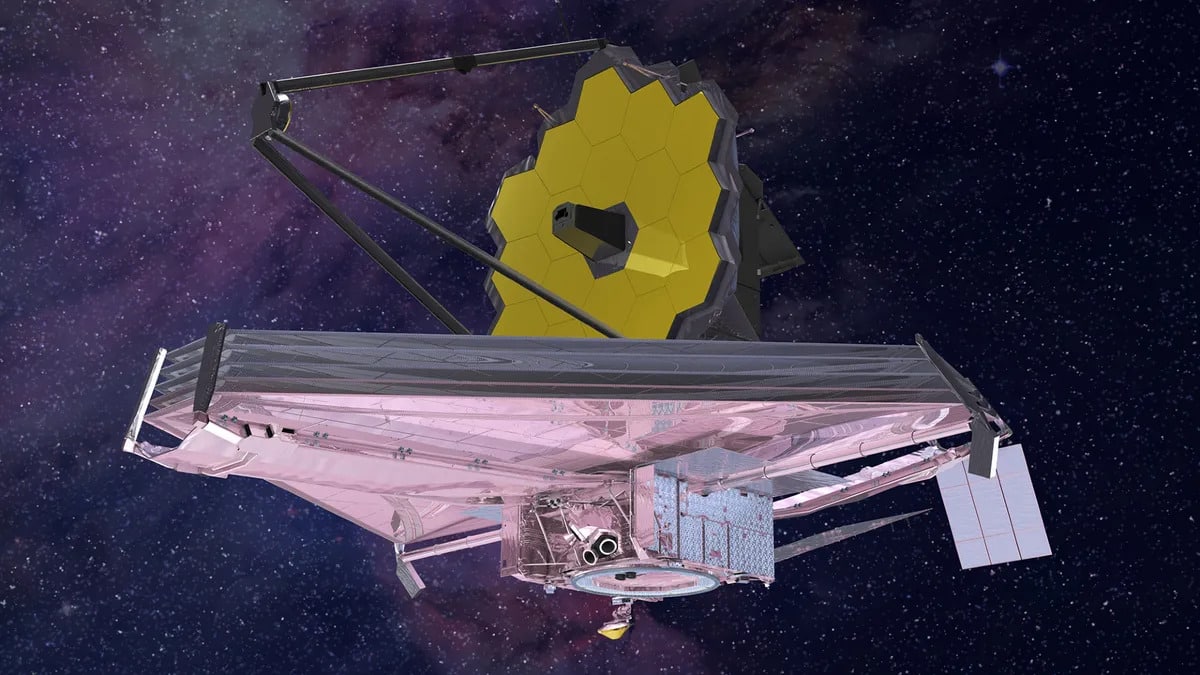Looking at the sky can sometimes make you dizzy, and if you stop to reflect under the stars, it makes you feel very small, right? But the more we look up, the more curious we become about what’s out there, and that’s why space exploration is full of missions.
From probes that have approached the Sun to telescopes that look at the first flashes of the universe, they’re still up there, traveling, observing, learning.
And the beautiful thing is that, even though we can’t see them directly (they’re too far away), we can know where they are. This month, the night sky holds the locations of some of the most iconic ones: the James Webb Telescope, the Voyager 1 and Parker Solar Probe missions, and the Juno and New Horizons probes.
James Webb
The JWST) is the jewel of our astronomy, it captures light that has traveled for billions of years, as if we were looking into the past (right when the first galaxies were born after the Big Bang).
Find Aldebaran, the reddish star in the constellation Taurus, just above the hunter Orion. A little higher you’ll see the Pleiades, a small group of stars that look like a handful of diamonds. Well, James Webb is about five degrees below that point, slowly moving toward Aldebaran throughout the month.
You won’t see it with the naked eye, of course, but if you have a good telescope, you can look at the place where the most powerful telescope ever built is working.
Parker Solar Probe
This NASA spacecraft has touched the Sun. In 2021, the Parker Solar Probe crossed its corona to study how solar wind and magnetic storms form, which sometimes even affect Earth.
Now it’s about 147 million kilometers away from us!! You can observe it (or imagine it at least) low on the southwestern horizon, near the star Antares, in the constellation Scorpius.
Juno: the guardian of Jupiter
Since 2016, Juno has been orbiting Jupiter to study its atmosphere, core, and moons.
At this moment, it’s 748 million kilometers from Earth. If you want to locate it, look for the stars Castor and Pollux in the constellation Gemini. Just before dawn, you’ll see the brightest point in the sky, that’s not a star, it’s Jupiter, and right there, orbiting around it, is Juno.
New Horizons
New Horizons, launched in 2006, was the first spacecraft to fly by Pluto, showing us a completely new universe.
Then, in 2019, it continued its journey into the Kuiper Belt, where it explored Arrokoth. Today it’s more than 9.4 billion kilometers from Earth and continues traveling into interstellar space.
To imagine where it is, look for the constellation Sagittarius (yes, the “cosmic teapot”). New Horizons is located just above the handle, near the star Pi Sagittarii.
Voyager 1
The most legendary of all, Voyager 1 was launched in 1977 and is the farthest spacecraft ever sent by humanity! In 2012, it officially crossed the boundaries of the solar system, entering interstellar space.
Today it’s more than 25 billion kilometers away from us. Even so, it still sends data and carries the famous NASA Golden Record (which contains sounds, greetings, and images from Earth, in case someday someone or something finds it).
During this month, its position can be traced in the constellation Ophiuchus, visible above the western horizon shortly after sunset.
We may never see these spacecraft with our own eyes, but knowing where they are connects us to something much greater! It’s part of who we are as a specie, curious, stubborn, and dreamers!

